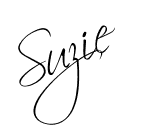It seems odd
for it to be the Christmas season and
about the only thing on my
mind right now is
a wedding dress.
I have to keep reminding myself
that I still have a major
holiday event to
plan and prepare for
but this dress is
what is taking
up most of my brain processes these days.
But can you blame me?
I am so EXCITED
to do this dress!
It's the sewing challenge
I have been craving
and waiting for
for a long time.
So,
amid all the
long lines,
decorating,
baking,
wrapping,
plotting
and
planning of the season,
I'm studying up
on all the finer points
of gown design and construction.
I thought I would share with you
a bit of knowledge about satin and some of the
beautiful dresses
available
beautiful dresses
available
today
for Fabric Friday this week.
Great Things About Satin
*Satin can be made from silk, rayon, acetate, polyester or even cotton.
*It is the staple for the wedding gown industry.
*It is considered one of the most luxurious fabrics in the world,
especially if made with silk.
*Satin is used in apparel, draperies, lingerie, linings, upholstery
and even shoes.
*Satin derives its shine or luster from the way it is woven.
*Light reflects off of the warp yarns (lengthwise yarns)
that float over the weft yarns (horizontal yarns).
*It's soft.
*It has a special luster.
*It's elegant.
*It's perfect for a princess!
Types of Satin
*Crepeback Satin - Highly twisted yarns are used as the weft or filling yarns while low-twisted yarns are used in the warp. This produces a very soft, drapy, clingy version with a high amount of shine depending on fiber content.
The back of the fabric will remind you of the texture of crepe paper.
This is commonly used in evening wear and lingerie.
*Antique Satin - Uses slub yarn (thick & thin, a natural spun look) in the weft giving the fabric a look of fabric that is hand produced.
Most common in wedding gowns, costumes or interior fabrics.
*Duchesse Satin - High yarn count of a finer yarn both in warp and weft. Crisp, heavier body than most silks. Luster dependent on fiber content but usually a lower luster.
Most common bridal satin available on the market today.
*Slipper Satin - Heavy, stiff satin used in the shoe industry. Typically, this is not available in your local fabric store.
Sewing with Satin
Laying out Pattern & Cutting
1. Scissors and pins should be very sharp. Dull equipment will snag satin. Once it's snagged, there's no fixing the problem.
2. All satin has a nap, or a directional shade difference, caused by the weave. All pattern pieces need to be layed out and cut according to the nap instruction of the pattern. Don't ignore this.
3. Pin fabric to an old sheet or sheets of tissue paper to keep it from shifting during the cutting process. No shifting means accurate cutting and accurate seaming.
4. Speaking of pins, make sure they are nice and sharp AND pin only in the seam allowances of the pattern. Pins break the "floating" fibers and once broken and cause pin marks that just do not go away. Try "silk" pins.
That being said, pins are so important in helping control satin as it has a mind of its own. Use pins to keep control,
just be mindful where you put them.
5. Avoid "ripping" out seams. Make all the proper fit adjustments prior to sewing and sew carefully. Too much ripping out leaves unsightly marks. Again, these just can't be fixed.
Stitching
1. Use a new sewing machine needle. With a large project like a wedding dress, I try and have half a dozen or more of the size I'm using on hand and change every so often, especially if I've hit a pin or sewn for many hours with the same needle.
2. Make sure the needle size and thread size are compatible with the fabric. I tend to use a finer needle, 7 or a 9, with a lingerie thread
for most of my gown sewing.
3. For finer satins, use a base of tissue paper under your two layers of fabric that you are sewing to keep it from drawing down into the bobbin area and cazing a nasty jam. Been there, done that. Sigh. This also can help to keep the layers from slipping around on the machine bed.
4. Try a walking foot, if you have one, when sewing. This will keep the layers together and not slipping against one another. A real lifesaver.
Pressing
1. Keep in mind the fiber content on this one. Polester will take a bit more heat than silk. Always test iron temperatures on scrap pieces prior to pressing. Start low and increase temp as needed.
2. Use a PRESSING motion (up and down) not a side-to-side ironing motion. You can easily over press satin as well as iron in creases or even flatten the weave and dull the shine. Go easy. Press just enough to acheive flat seams, crisp point, etc., but don't over do.
3. Never use steam. Water stains satin. Fabric ruined. Enough said.
4. Use a pressing cloth. Even tissue paper can be used in a pinch on low heat.
5. Prior to pressing, make sure iron is free of dirt, grim, scum and is smooth. Same with the ironing board. A new ironing board cover is a good investment at the start of a big project.
Sew Happy!












No comments:
Post a Comment
I love comments and look forward to reading and enjoying them. Thanks for stopping by Stay Calm and Sew Something